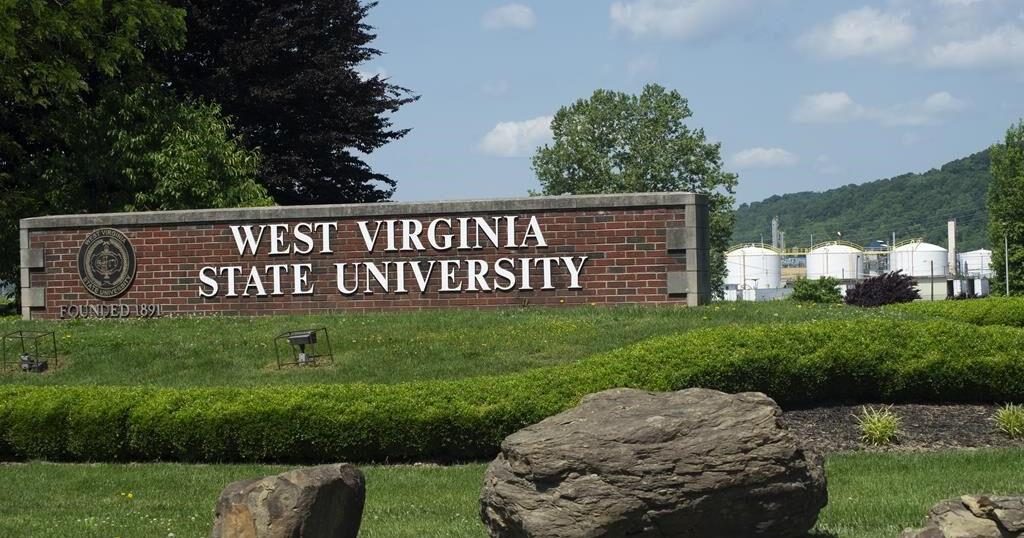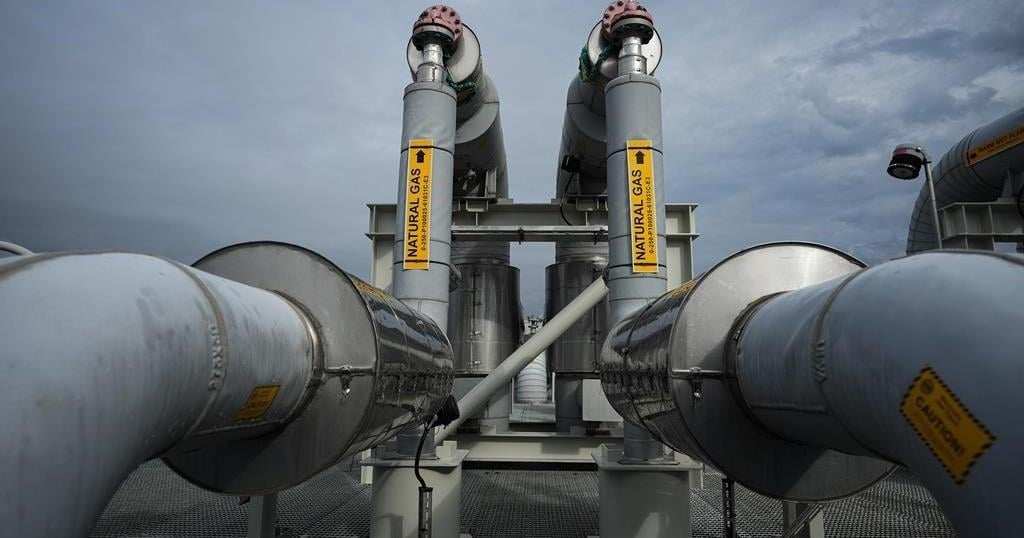HAY RIVER, N.W.T. — Aaron Campbell and his brother were boating from Yellowknife to Hay River, N.W.T., earlier this fall when they got stuck on a sandbar in the shallow waters of Great Slave Lake near the mouth of the Hay River.
The two men spent the night on their boat and Campbell said when rescuers tried to drag them off the sandbar, their ropes kept breaking. They were freed the next day by a tug.
“That was pretty intense,” Campbell said. “It was quite the day.”
He isn’t the only one who has got stuck in the Hay River port in recent months.
The Canadian Coast Guard ship Dumit was removing fairway buoys at the end of the shipping season on Oct. 15, when it became lodged on a sandbar. Cargo from the ship had to be off-loaded onto another one while the tug helped to free the Dumit the following evening.Two barges also became stuck in August and had to be towed back to shore.
Calls have been intensifying to dredge the river’s channels leading into Great Slave Lake to remove built-up sediment and deepen the waterway. It’s a particular problem in the east channel, where shipping companies and most fishers enter and exit the port. Residents, fishers and politicians say if it’s not completed, it could have wide-reaching effects on the fishing industry, marine transport and flooding.
“If we do not address the problem, it will affect every business, every homeowner, every aspect of life in Hay River,” said Jane Groenewegen, who represented Hay River South in the territorial legislature from 1999 to 2015.
Hay River has the one of the largest inland ports in Canada. Groenewegen said marine transport and related industries are its “backbone.”
The port is crucial for fishers and Canadian Coast Guard operations, as well as being home to a Fisheries and Oceans Canada office. It also connects roads and railways from the south to resupply barges that travel to coastal locations along the Mackenzie River and in the western Arctic.
Campbell, who is Yellowknives Dene and lives in Hay River, is looking to enter the territory’s fishing industry. He said he’s concerned about what could happen when he returns to shore with his boat heavy with fish if water levels remain low.
“I’m definitely for dredging,” he said.
Jamie Linington, with the N.W.T. Fisherman’s Federation and Freshwater Fish Harvesters Association Inc., said the low water level is a safety issue, as it worsens waves when boats are coming in and bottoming out could damage boats and affect fishers’ livelihoods.
Linington said the federal government is “grossly ignoring the North” and has underfunded freshwater harbours.
“Our harbour is terrible,” she said. “I think it’s just Canada’s systemic, habitual pattern really on how they view industries and people.”
Linington said having a vibrant fishing industry contributes to the broader Canadian economy, bolsters food security and sovereignty, and benefits tourism with better lake access.
She added the N.W.T.’s commercial fishing industry is largely made up of Indigenous fishers carrying on intergenerational practices that survived colonization.
A new roughly $13-million Canadian Food Inspection Agency-certified fish plant is set to open in Hay River this spring.
Hay River Mayor Kandis Jameson believes dredging the harbour could also help with spring flooding.
The town and nearby K’atl’odeeche First Nation experienced their worst flooding on record in May, resulting in more than $174 million in damage.
“If we have a cork at the entranceway or exit from our river into the harbour … the water needs somewhere to go,” Jameson said, adding when the water is shallow, it freezes to the ground.
Municipal and territorial politicians based in Hay River have called for dredging for more than a decade. Jameson said it’s been a “political hot potato.”
The N.W.T. government has long insisted dredging is a federal responsibility, but the Canadian government no longer has a program or funding for it.
The Coast Guard used to regularly complete dredging in commercial vessel channels, including Hay River. Then the national program was terminated in 1997 and dredging became the responsibility of the private sector and port operators, save for the international waterways of the Great Lakes.
A municipal report says between 1961 and 1996, an average of 21,842 cubic metres of sediment were dredged from Hay River’s east channel and docks every year. Since then, it’s been done occasionally.
The Town of Hay River sold off its aging equipment and doesn’t have the funds to complete full-scale dredging.
Rocky Simpson, legislature member for Hay River South, said the territorial government’s efforts to get federal support for dredging over the years have been insufficient.
“They weren’t real efforts,” he said. “What the feds are going to be looking for … is they’re looking for a business case.”
Simpson said he’s hoping the territorial government will consider dredging off the ice this winter using backhoes. He worries that if port infrastructure isn’t maintained, the town could lose the shipping industry, which would be devastating.
A Canada Transportation Act Review report in February 2016 recommended renewed federal funds for dredging in Hay River.
Wally Schumann, a former infrastructure minister and legislature member for Hay River South, said he’s concerned the lack of dredging will add to shipping costs as barges won’t be able to carry as much fuel or freight.
Current Infrastructure Minister Diane Archie recently sent letters to federal ministers stressing the importance of restoring the harbour. The department previously submitted a proposal to Transport Canada’s Oceans Protection Plan funding proposal in 2020 to remove sediment impeding navigation to the Marine Transportation Services shipping terminal, but that was rejected.
Michael McLeod, the Liberal member of Parliament for the N.W.T., said he has met with several fisheries ministers since 2015, but their response has remained that the federal government does not have a dredging program.
He said he’s hoping the territorial government will develop a business case it can present to the federal government to try and find available funding.
“We need to find a resolution to this.”
This report by The Canadian Press was first published Nov. 4, 2022.
This story was produced with the financial assistance of the Meta and Canadian Press News Fellowship.
Emily Blake, The Canadian Press
Related























